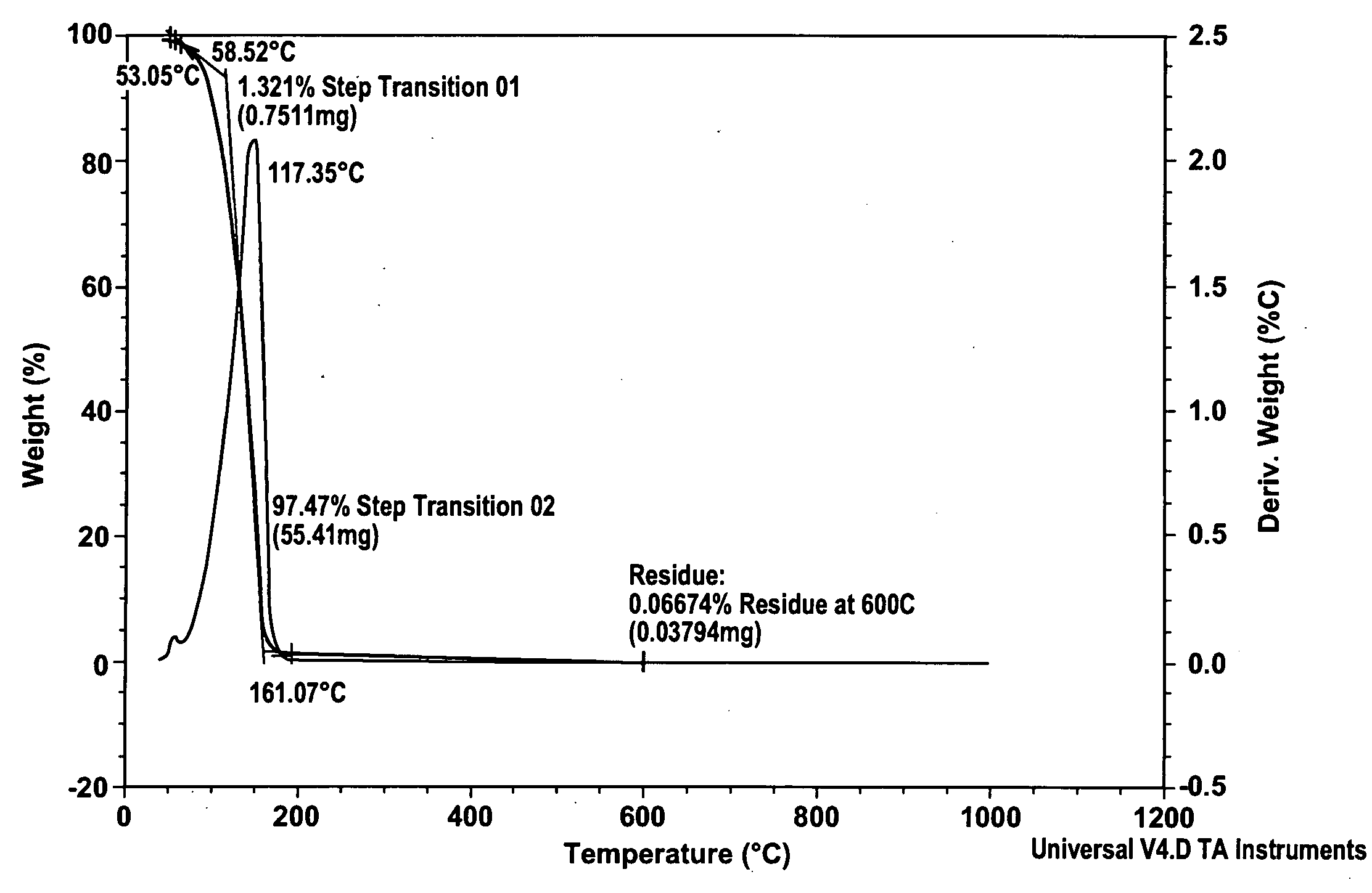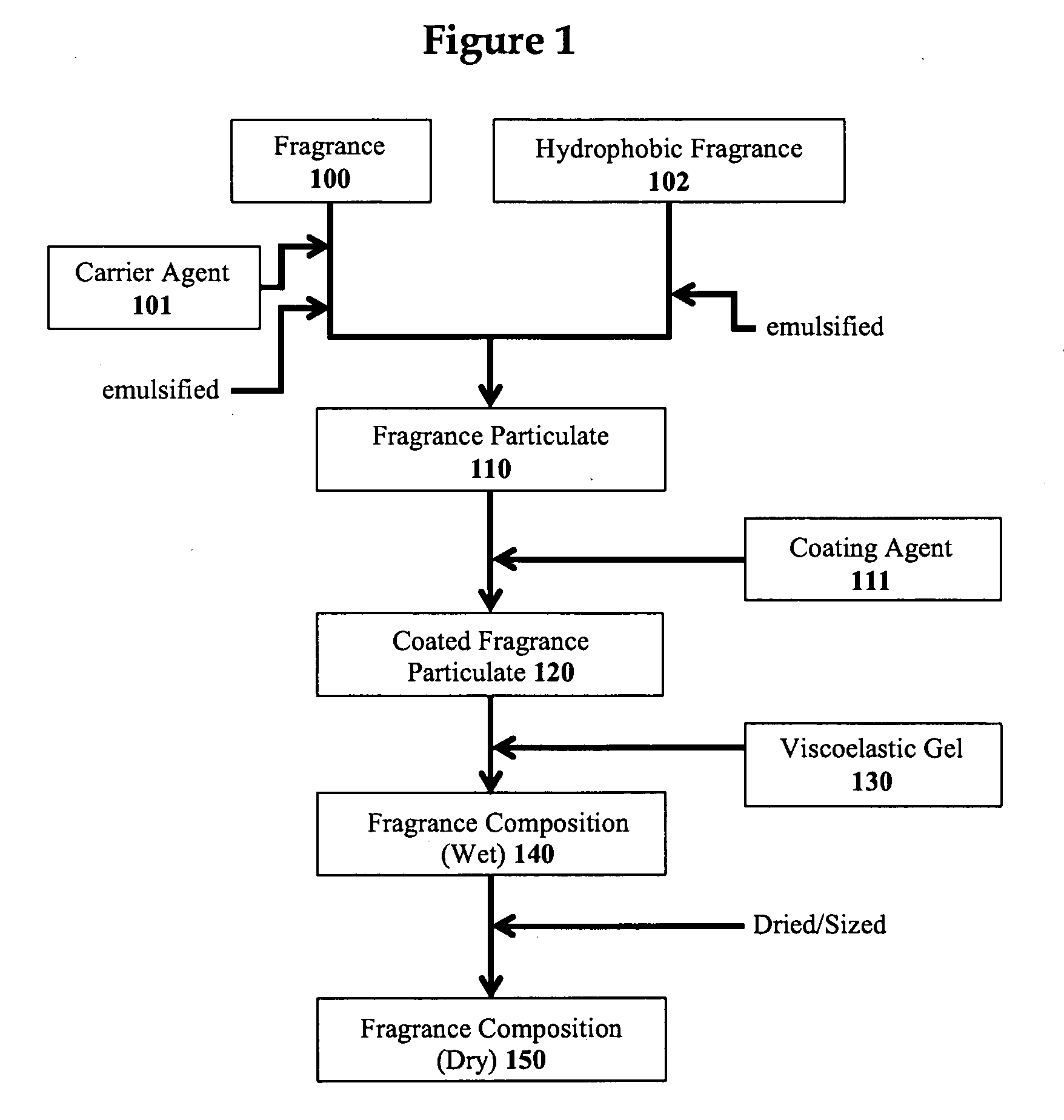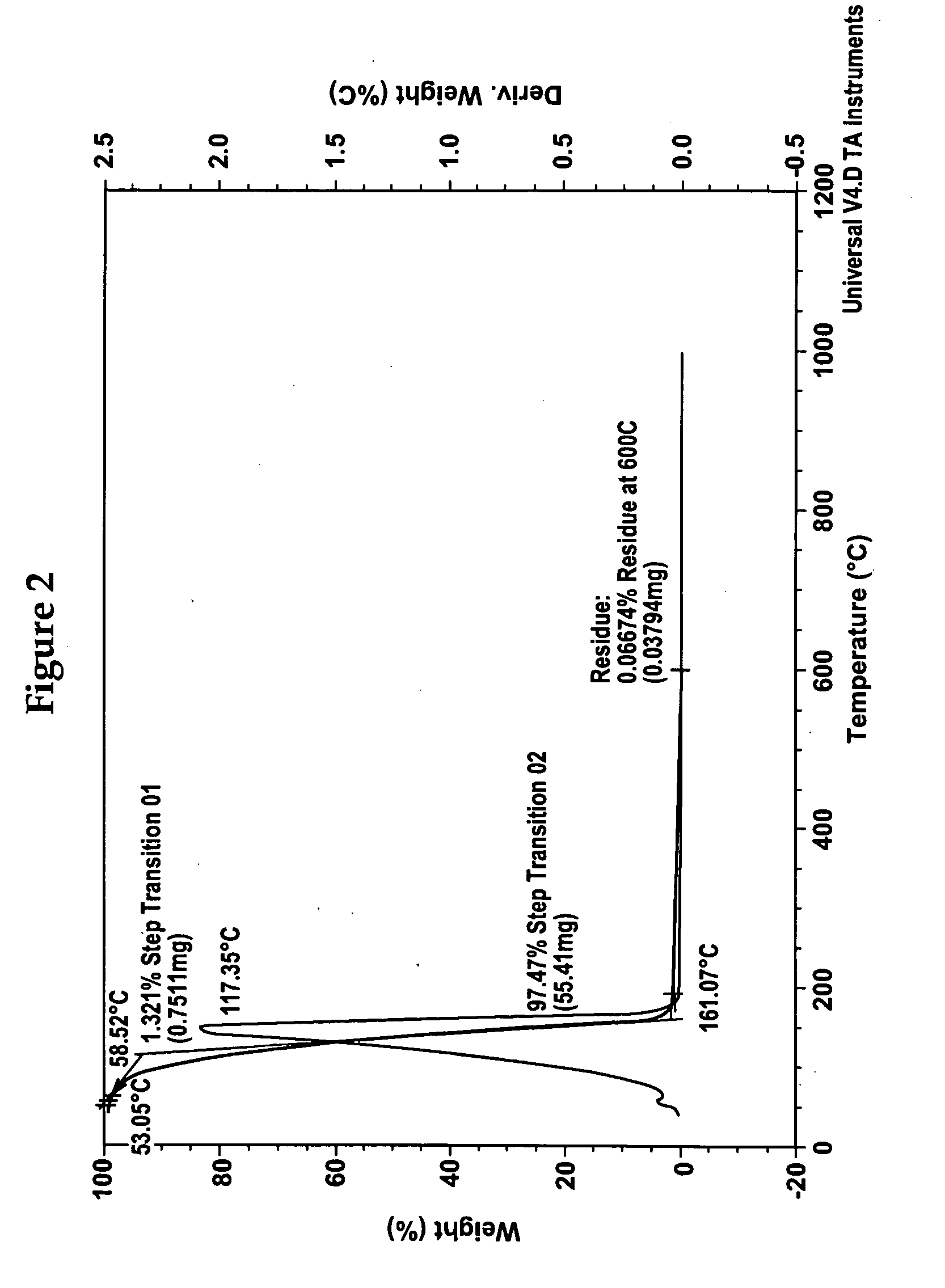Multilayer fragrance encapsulation
- Summary
- Abstract
- Description
- Claims
- Application Information
AI Technical Summary
Benefits of technology
Problems solved by technology
Method used
Image
Examples
examples
[0090]The following examples more fully illustrate preferred embodiments within the scope of the present invention. The following examples are provided to illustrate the invention, but are not intended to limit the scope thereof.
[0091]General ranges for components of the preferred embodiments are presented in Table 1. These weight percent ranges signify the weight percent of the component in a wet gel composition, as made clear below. Table 1 lists both necessary and optional components and provides ranges for the inclusion of these components in the fragrance composition (wet gel composition).
TABLE 1ComponentsRange (%)Fragrance 2-7Viscoelastic Gel (e.g., κ-carrageenan)0.5-3Coating Agent (e.g., Soy Protein Isolate)0.5-1DI Water 60-900.5 M aqueous citric acid 0.5-2.4Cross-linking Agent0.15 M Calcium chloride soln.0.5-3Sodium Benzoate0.01-1 Potassium Chloride0.5-3Propylene Carbonate 1-3Sodium Montmorillonite Clay0.1-5Organoclay 5-10
[0092]Representative preparation of a viscoelastic g...
example 67
[0101]In yet another example the fragrance composition is loaded into or entrapped within a porous solid. One method for making an entrapped fragrance composition is by the dispersion of a wet gel composition, e.g., Examples 1-29, in water and the addition of a porous solid. The addition of the fragrance composition to the porous solid can be done as a single step, or can be done step wise with the drying of the entrapped fragrance composition prior to the further addition of the wet gel composition. The stepwise addition of the wet fragrance composition to the porous solid can yield a final entrapped fragrance composition with a higher fragrance concentration, in part because the volume occupied by the wet gel prevents the further inclusion of fragrance composition in single step additions. Alternatively, the wet gel composition can be added to the porous solid prior to gellation. A standard formulation was prepared according to the Representative Preparation:
Standard FormulationMa...
example 68
[0103]In another example the standard formulation was added to the porous carrier prior to the gellation of the viscoelastic gel. The standard formulation was admixed with MICROSPONGE 5640 (available from AMCOL Int'l) at 50° C. The mixture was allowed to set at about 5° C., and then was dried at about 50° C. The general parameters for the preparation of this example are:
Microsponge 5640 Used (g)50.00Mass of Standard Formulation Added (g)78.67Mix Time (Minutes)20Time to Set (Hours)22Wet Weight (g)126.85Time Dried at 50° C. (Hours)15Weight After Drying (g)51.83Theoretical fragrance conc.3.2%Final analytical fragrance conc.3.1%
TGA Method for Determining Thermal Stability
[0104]The thermogravimetric analysis (TGA) of dry fragrance compositions was carried out on a TA Instruments TGA 2950. Generally, about 20 mg a sample was heated at 10° C. / min from 25° C. to 600° C. Dried fragrance compositions were tested by TGA to determine weight loss onset temperatures. The weight loss onset tempera...
PUM
| Property | Measurement | Unit |
|---|---|---|
| Temperature | aaaaa | aaaaa |
| Temperature | aaaaa | aaaaa |
| Length | aaaaa | aaaaa |
Abstract
Description
Claims
Application Information
 Login to View More
Login to View More - R&D
- Intellectual Property
- Life Sciences
- Materials
- Tech Scout
- Unparalleled Data Quality
- Higher Quality Content
- 60% Fewer Hallucinations
Browse by: Latest US Patents, China's latest patents, Technical Efficacy Thesaurus, Application Domain, Technology Topic, Popular Technical Reports.
© 2025 PatSnap. All rights reserved.Legal|Privacy policy|Modern Slavery Act Transparency Statement|Sitemap|About US| Contact US: help@patsnap.com



